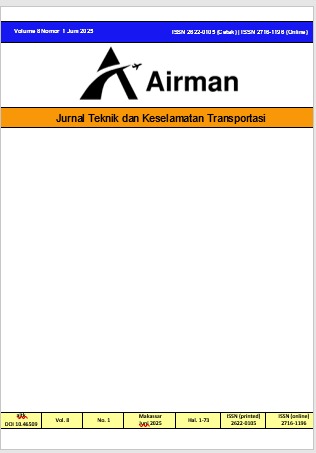Tensile Test Analysis with Directional Variation of Composite Fibers Combining Sisal Fiber and Polyester Matrix Coconut Fiber as Materials on Aircraft
DOI:
https://doi.org/10.46509/ajtk.v8i1.735Keywords:
natural fiber composition, sisal-coconut hybrid fibers, fiber orientation, tensile strength, sustainable materials, light-weight aircraft structureAbstract
The increasing demand for sustainable and lightweight materials in the aviation industry has driven interest in natural fiber–reinforced composites as alternatives to conventional synthetic fibers. This study explores the mechanical performance, particularly tensile strength, of hybrid composites made from sisal and coconut fibers embedded in a polyester matrix, focusing on the influence of fiber orientation. Unlike previous studies that primarily investigated single natural fibers, this work evaluates a hybrid configuration with three orientations (0°, 45°, and 90°). Composites were fabricated using the hand lay-up technique and tested according to ASTM D3039 standards with a Universal Testing Machine (UTM). Results show that fiber orientation substantially influences tensile properties, with the 90° arrangement achieving the highest modulus of elasticity (2.312 GPa), followed by 0° (1.742 GPa) and 45° (1.245 GPa). These findings confirm the crucial role of fiber alignment in stress transfer and demonstrate that sisal–coconut composites can deliver competitive mechanical performance. The study contributes novel insights into hybrid natural fiber composites and suggests their potential use as sustainable alternatives for non-primary structural applications in lightweight aircraft.
Downloads
Published
How to Cite
Issue
Section
License
Copyright (c) 2025 Ikhsan Irsyad Usman, Fachrurrazy, Hendri Louis Latif, Sukarwoto

This work is licensed under a Creative Commons Attribution 4.0 International License.
This work is licensed under a Creative Commons Attribution 4.0 International License.












